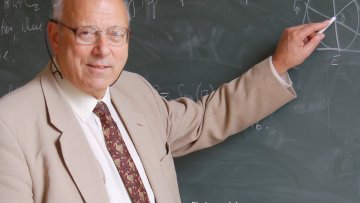Center of quiver Hecke algebras and cohomology of quiver varieties
Abstract
I will explain how to relate the center of a cyclotomic quiver Hecke algebras to the cohomology of Nakajima quiver varieties using a current algebra action. This is a joint work with M. Varagnolo and E. Vasserot.


